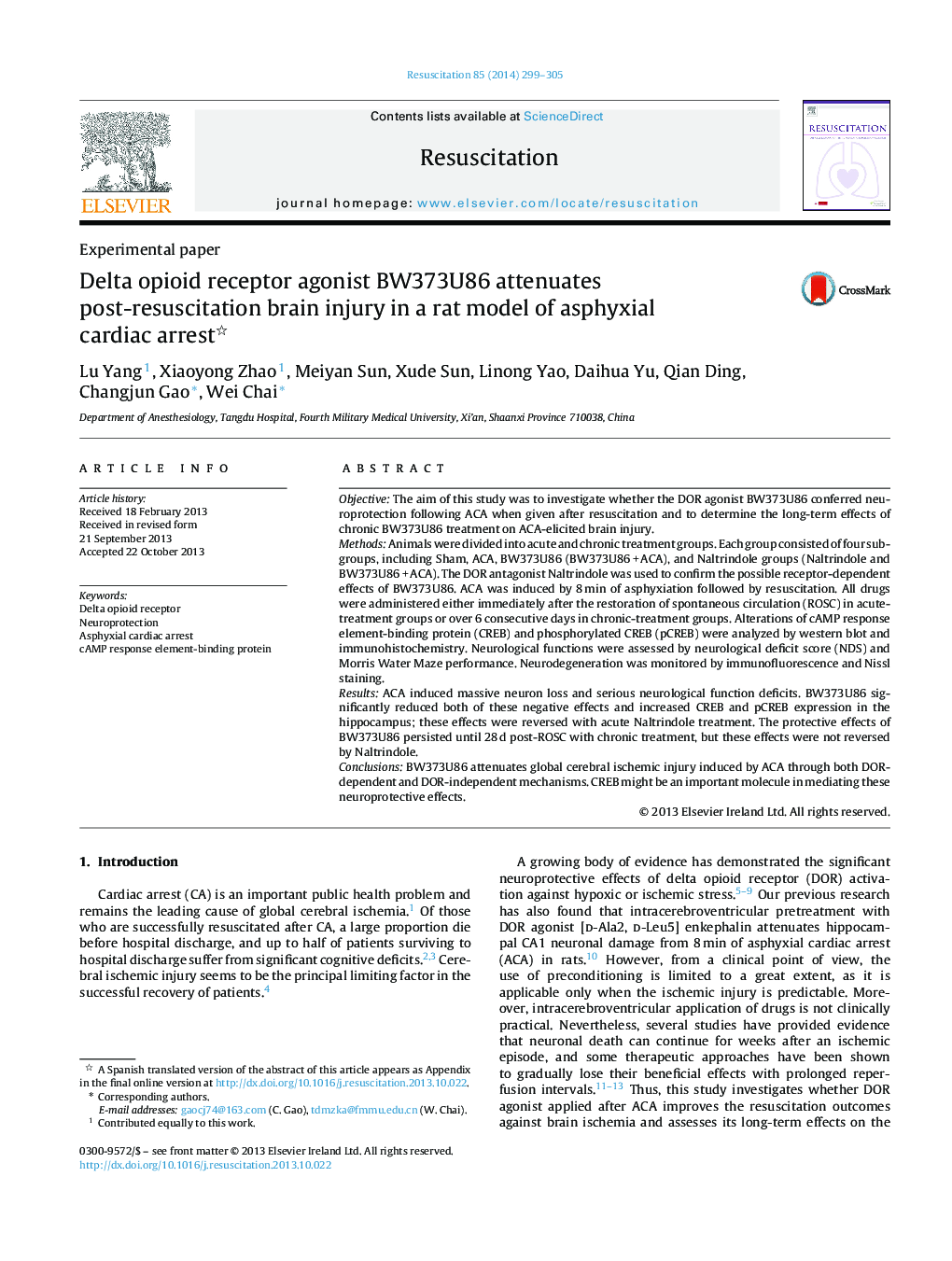| Article ID | Journal | Published Year | Pages | File Type |
|---|---|---|---|---|
| 3008413 | Resuscitation | 2014 | 7 Pages |
ObjectiveThe aim of this study was to investigate whether the DOR agonist BW373U86 conferred neuroprotection following ACA when given after resuscitation and to determine the long-term effects of chronic BW373U86 treatment on ACA-elicited brain injury.MethodsAnimals were divided into acute and chronic treatment groups. Each group consisted of four sub-groups, including Sham, ACA, BW373U86 (BW373U86 + ACA), and Naltrindole groups (Naltrindole and BW373U86 + ACA). The DOR antagonist Naltrindole was used to confirm the possible receptor-dependent effects of BW373U86. ACA was induced by 8 min of asphyxiation followed by resuscitation. All drugs were administered either immediately after the restoration of spontaneous circulation (ROSC) in acute-treatment groups or over 6 consecutive days in chronic-treatment groups. Alterations of cAMP response element-binding protein (CREB) and phosphorylated CREB (pCREB) were analyzed by western blot and immunohistochemistry. Neurological functions were assessed by neurological deficit score (NDS) and Morris Water Maze performance. Neurodegeneration was monitored by immunofluorescence and Nissl staining.ResultsACA induced massive neuron loss and serious neurological function deficits. BW373U86 significantly reduced both of these negative effects and increased CREB and pCREB expression in the hippocampus; these effects were reversed with acute Naltrindole treatment. The protective effects of BW373U86 persisted until 28 d post-ROSC with chronic treatment, but these effects were not reversed by Naltrindole.ConclusionsBW373U86 attenuates global cerebral ischemic injury induced by ACA through both DOR-dependent and DOR-independent mechanisms. CREB might be an important molecule in mediating these neuroprotective effects.
